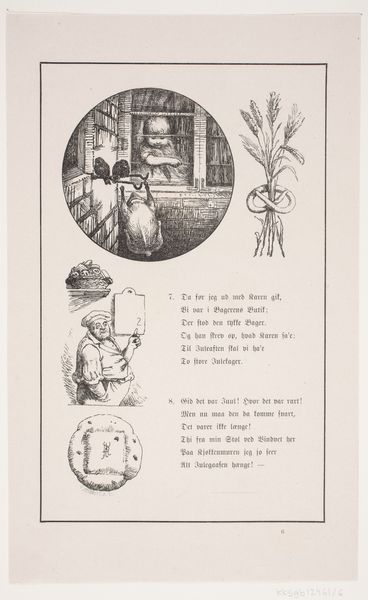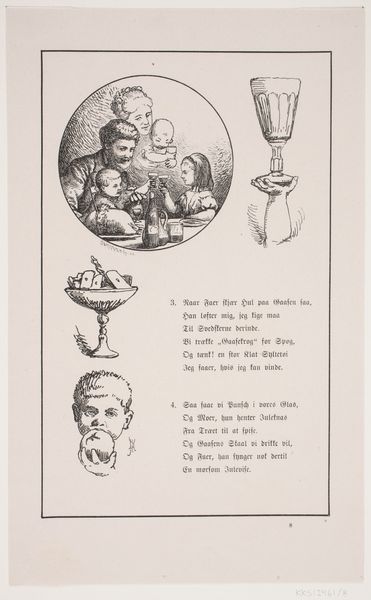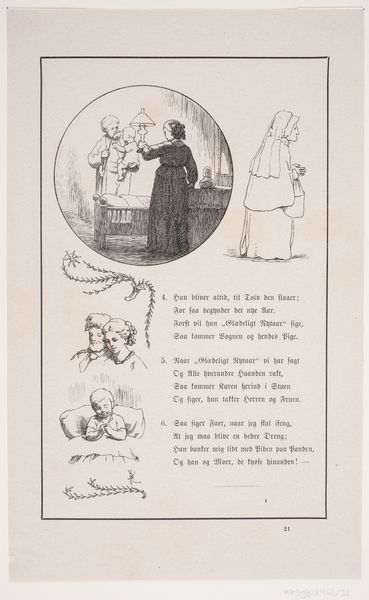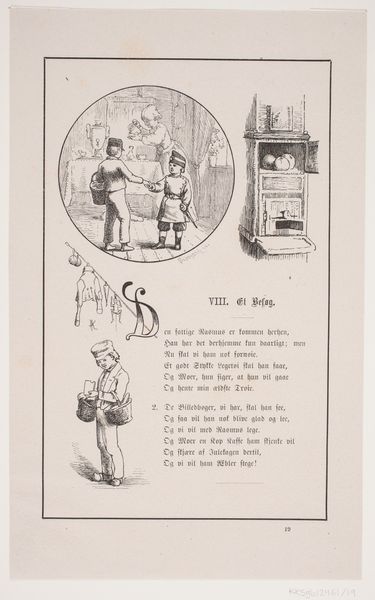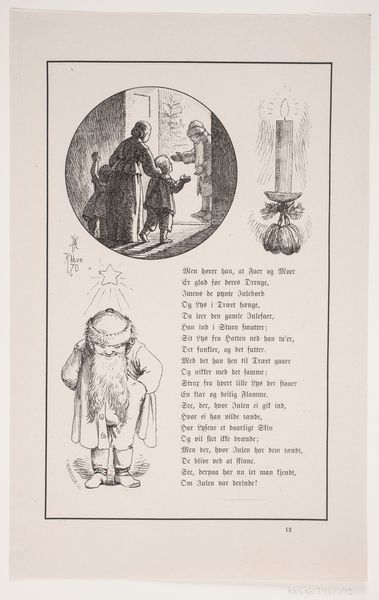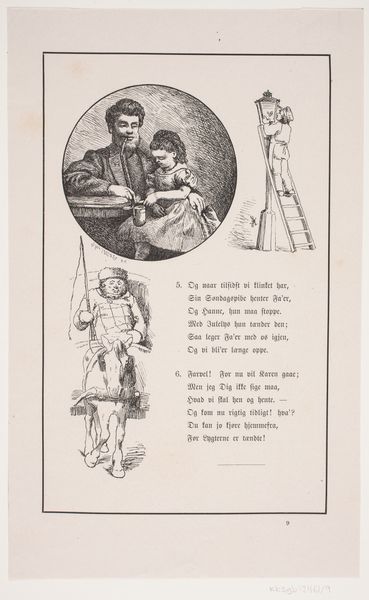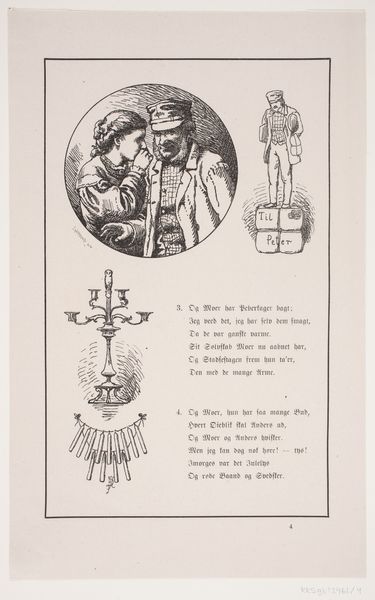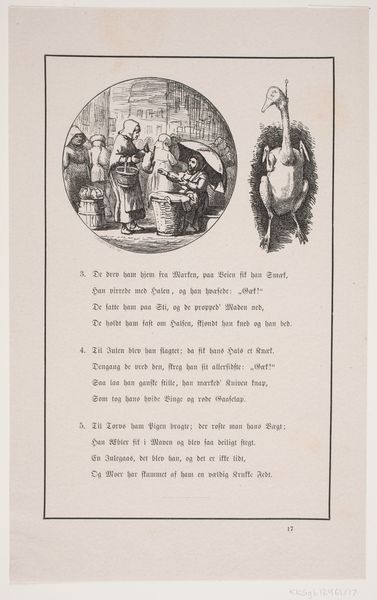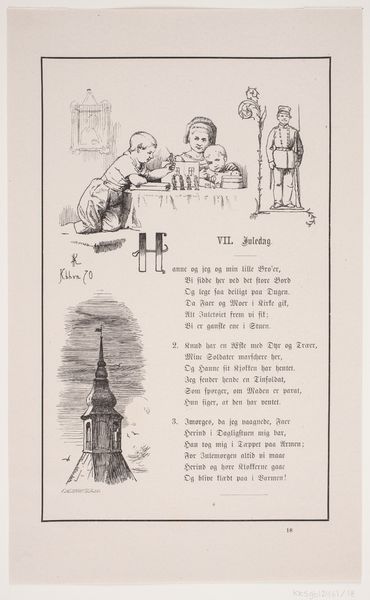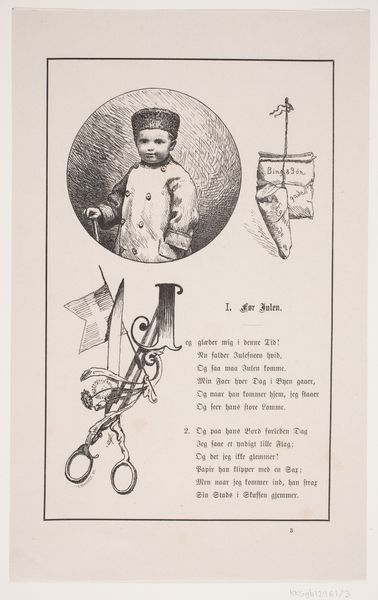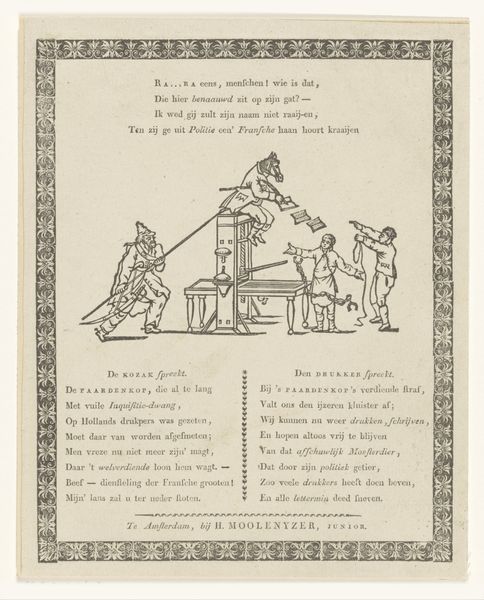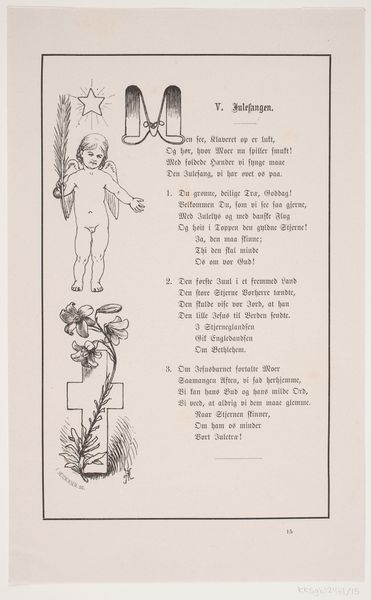
drawing, print, etching, paper, ink
#
drawing
#
narrative-art
# print
#
etching
#
old engraving style
#
paper
#
ink
#
genre-painting
Dimensions: 254 mm (height) x 160 mm (width) (bladmaal), 205 mm (height) x 128 mm (width) (billedmaal)
Editor: So, this is an etching from 1870 by Carl Leonard Sandberg, titled "Illustration til Johan Krohn, 'Peters jul'." It feels… quaint? And very domestic. What do you see in this piece beyond the obvious holiday theme? Curator: Beyond the surface, I see a powerful encapsulation of bourgeois values and anxieties within the seemingly innocent setting of a children’s Christmas story. Consider the context: 1870. Industrialization is changing family structures. The emphasis on domesticity and the idealized vision of childhood serve as a bulwark against these unsettling forces. Editor: So, you're saying this idealized family scene actually speaks to broader social changes and anxieties? Curator: Precisely. The poem talks about the end of Christmas, almost mourning its passing. It's interesting how even in moments of joy and celebration, there’s an undercurrent of loss, isn't it? Who is afforded these idealised scenes and who is outside the frame? It compels us to consider it through the lens of class. Where does it stand regarding labour, gender, and economic power? Editor: I never considered how social and economic factors were deeply entrenched in an illustration that feels so simply… festive. Curator: And isn't that telling in itself? We've naturalized the scene as being idyllic when in fact it reveals some pretty heavy-handed themes around identity and power! Editor: Absolutely. It gives me a new perspective, especially thinking about how images, even seemingly innocent ones, can reflect societal anxieties. Curator: Exactly! Now, consider the ways that modern depictions of the season have changed to perpetuate many of these same ideals, yet shift under an intersectional lens. What does it reveal?
Comments
No comments
Be the first to comment and join the conversation on the ultimate creative platform.
